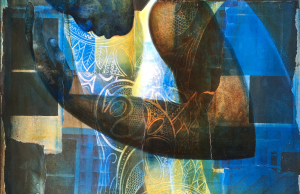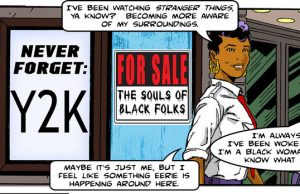Views on the West Wing (I)
It is fair to say that the Obama Presidency has set my mind awash in currents of confusion: I confess—I don’t know what the man is doing, except that whatever it is seems to align without fail with what we call the political. As I see it (or not), the obscurity of motives that veils this White House from clear view—this playing both sides of the road—feeds my doubt that the Obama years will restore our sense of the presidential office as a source of visionary practice. But it is entirely possible that the kind of clarity that I am longing for in this case has never been a trait of any White House my whole life. Perhaps the only thing that we really mean to say when we speak of the “visionary” in the same sentence with any aspect of U.S. or world politics, and especially the doings of the Oval Office, marks nothing other than the mythical effect—what the historians tell us actually happened, in the aftermath of any coeval moment, and how we supposedly felt about it—Franklin D.Roosevelt’s unfettered brazenness, Harry Truman’s quintessential honesty, Dwight Eisenhower’s unprecedented insightfulness, or John F. Kennedy’s renewal of presidential energy itself. Looking back from here toward the era immediately following World War II (1945-68), we get the distinct impression that the American Presidency has been diminished both in terms of the significance and stature of the office itself and the character and caliber of the men and (now) women who seek it. As the Presidency has shrunk, the apparatus around it has grown fat and bloated and assumes a life of its own; in other words, the political “strategist,” for example, not elected to anything, and as far as I can tell, not likely to be, is as certain to wield decisive influence on the determination of foreign and domestic policy as the Big Money. This administration is no different in that regard—the veritable wall of mediators and “go-betweens” around this President reminds me of the archaic fortifications that demarcate the boundaries of certain old European towns from the newer urban configurations that have sprouted out of them, as in the beautiful marine city of Dubrovnik, for instance.
But in 2007-08, the Obama candidacy impressed millions of Americans that “change” was not only palpable in the air, but imminent on the ground. It seemed then that candidate Obama would model in the flesh the visionary inspiration arguably missing from the West Wing since Lyndon B. Johnson accomplished the unfinished legislative agenda of his predecessor, despite hell, high water and the Big Money. It is far from over. But from my little aperture on the world, I see clouds.
We know now, according to the pundits who presume to have solved the mystery, that the President is supposed to be a “pragmatist,” and like all tags that are coded to do the work of silencing or censoring (as in “post-partisan,” “post-racial,” etc.), the former is intended to disarm and deflect criticism rather than advance the understanding; inasmuch as the American philosophical tradition of pragmatism is long and distinguished, from Charles Sanders Peirce, at work in the late nineteenth century, to William James, John Dewey and Richard Rorty, among others at crucial nodal points in the twentieth, then the conversation concerning President Obama’s political witness, read against pragmatist imperatives, might begin there rather than come to a stop or conclusion. But the real difficulty of sustaining honest conversation and critique about this President is that much of the public discourse directed toward his person and/or office is forced into two channels of address that subsist in an inverse relationship—the sacralization of the President on the one hand and the demonization of him, or his version of the office of President, on the other. Critique has to do with neither of these postures so that it is not a matter of splitting the difference or finding the median range between them, but, rather, critique attempts to provide the most cogent articulation of the human and social stakes involved in the expressions and dispositions of power. At the moment, such an articulation (even the possibility of it) is drowned out by the static of mutually inversive “combatants.”
Certain scenes, indelibly poised like sets of reels that define our era, replay in the mind: on election night, November 2008, the crowds that spontaneously gathered in Chicago’s Lincoln Park suggested—in size and intent—nothing short of a kind of national convocation, and faces in the crowd, momentarily captured by panning cameras, some of them fixed in tearful gestures of reverence, confirmed one’s sense of the moment, at least from the seeming point of view of the participants, as the fulfillment of telos. In other words, this display of supreme respect and attentiveness enacted a vision of history that some would call the realization of King’s dream, the completion of the Civil Rights agenda, or in theological terms, a rehearsal of the good news story of an irremediable beneficence. (“God has been mindful of us; He has blessed us.”) In any case, it was as though the long journey of common suffering, a thematic so inextricably linked to the chronicle of African-Americans’ cultural apprenticeship in America, had come to a halt. From the angle of transcendence, then, questioning the motives of the Presidential office and indeed of the man himself amounts to disrespect.
In the inverted picture of this scene, if we imagine it in terms of an opposing field of action, the gestures of a figural reading of history are met by its nemesis—the spectacle of demonization also projects a face as hideous as the motives that propel it. August 2009, saw the rise of the “Tea Party” movement in the United States, and what it lacked in an intelligent response to the nation’s assortment of ills—a solution to the health-care crisis, high unemployment rates, massive home foreclosures, a blasted budget and excessive debt, brought on by military misadventure, etc.—was more than compensated by the raw manipulation of signs on display at its various rallies. Having grown up in the southern United States at the tail end of legally-sanctioned segregation by strict racial code, I do not recall even then often witnessing the degree of malice and antipathy that would equal in expressive force the breathtaking intensity of those hand-held salutes to rage: the President in effigy, countenance twisted into features of the Joker with blaringly red overgrown lips or mustachioed into a resemblance of Adolf Hitler. Even before the Tea Party hit the streets, a semiotics of disparagement, like sentinels flashing red, had prepared the way with the presidential office represented as a simian splotch on the asphalt. This disturbing repertoire of images was as effective as speech and could rightly be thought of as such in their loud and random irresponsibility.
If it is possible to imagine that anything could have been worse than the presidential detractors’ insistence that the President is actually an alien—born elsewhere, against all testament to the contrary—then it has adhered in the horrendous inhumanity that produced those images. This fierce and unrelenting unmaking the world that seems to take delight in its capacity to divide and destroy is manifest today along a number of stress points and remains, to my mind, as urgent a problematic as any that the country faces; what the honest critic, tending to silence in the unfolding horror, really wants President Obama to do is to confront it alongside the rest of us. Neither demi-god, nor demon, he is first citizen of the United States and as such neither above, nor below our awful struggle.




0 comments